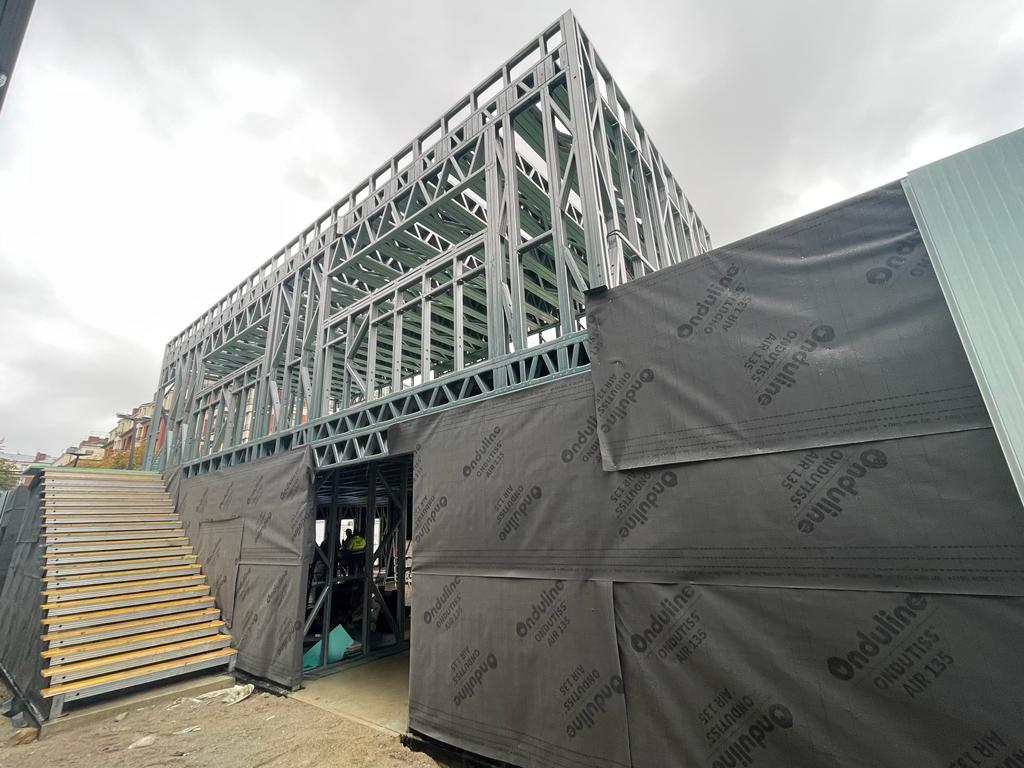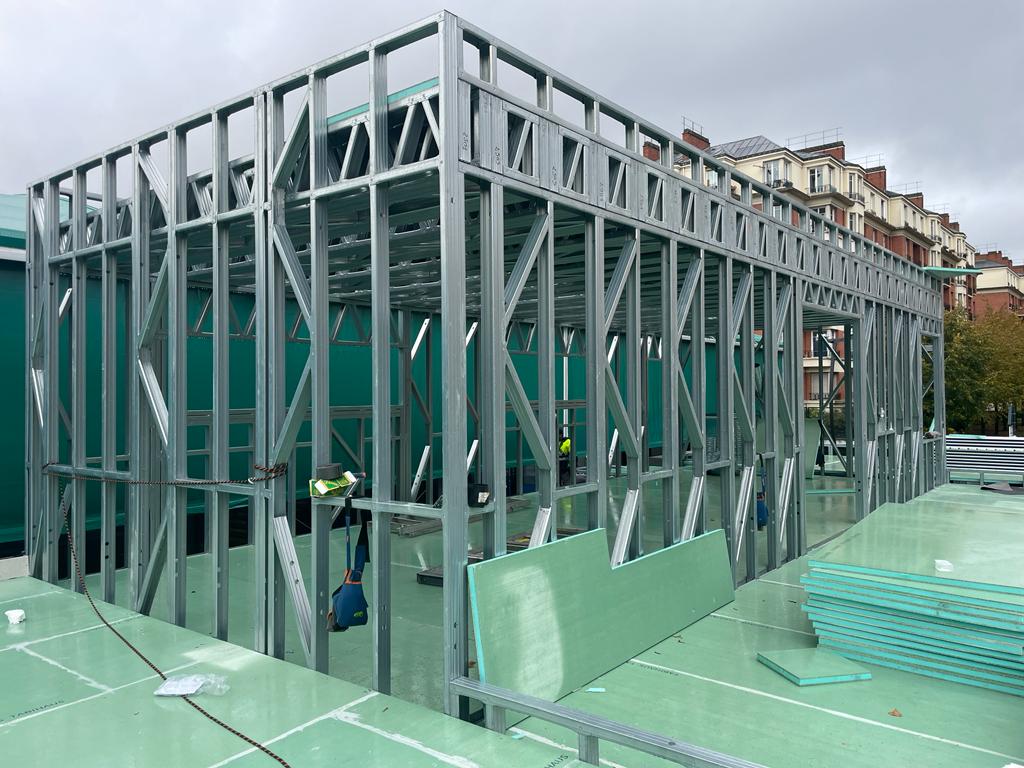
Preventive Planning in Steel Frame Construction: Key to Avoiding Winter Delays.
Steel frame project planning should include a specific strategy to address winter challenges. This implies:
1. Time planning and work sequence:
A detailed schedule that takes winter weather conditions into account can help minimize delays. This involves scheduling critical jobs at appropriate times.
2. Rigorous quality control:
Constant supervision and performance of quality inspections are essential to ensure that steel frame structures are built to the required standards.
3.Coordination with suppliers and subcontractors:
Efficient coordination with suppliers and subcontractors is key to ensuring materials and workers are available when needed.
4. Climate contingency plan:
A contingency plan must be established that allows any adverse weather situation to be faced effectively, without significantly affecting the project schedule.
5. Staff training:
It is essential that staff are trained and aware of specific procedures to work safely and efficiently in winter conditions.

Constructive advantages of the steel frame system compared to the traditional one in autumn and winter.
Steel frame construction offers several significant construction advantages compared to traditional construction methods, especially in autumn and winter times with adverse conditions such as rain, wind and cold. Here are some of the key advantages:
1. Construction speed:
The steel frame is known for its speed of construction. Because many of the components are manufactured in a controlled environment, time on the job site is significantly reduced. This is essential to speed construction and minimize worker exposure to inclement weather.
2. Weather resistance:
Steel frame structures are designed to resist adverse weather conditions. The steel frames are durable and corrosion resistant, making them ideal for facing cold, rain and wind.
3. Waste reduction:
The precision manufacturing of steel frame components means that less waste is generated on the construction site compared to traditional construction, making waste management easier in unfavorable weather conditions.
4. Advanced thermal insulation:
The steel frame structures allow the integration of high-quality thermal insulation systems, which improves energy efficiency and comfort inside during the winter. This helps keep heat in the building and reduce heating costs.
5. Minimum interruption due to rain:
Traditional wood or brick construction can be significantly delayed in the event of constant rain. With steel frame, most critical jobs can be done indoors, minimizing rain delays.
6. Less risk of structural damage:
Steel structures are resistant to expansion and contraction caused by temperature changes, reducing the risk of structural damage in winter conditions.
7. Greater predictability in the schedule:
Manufacturing in controlled environments and reducing weather-related delays makes steel frame projects more predictable in terms of schedule, which is essential in unpredictable winter conditions.
STALART: Your partner in steel frame construction
STALART, as a leading steel frame company, offers expert advice and innovative solutions to meet winter challenges in construction. With extensive experience in projects of varying sizes and an unwavering commitment to quality, STALART is a trusted partner for architects, engineers, builders and developers.
The company works closely with its clients to develop specific planning strategies that address any type of conditions. In addition, STALART advises on the choice of high-quality materials, advanced thermal insulation systems and design solutions that guarantee the resistance and energy efficiency of steel frame structures.
